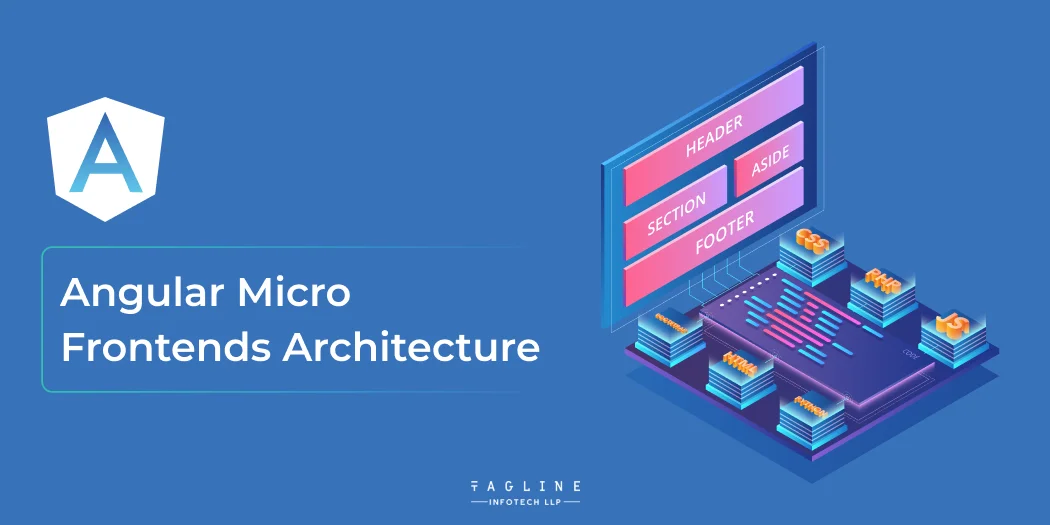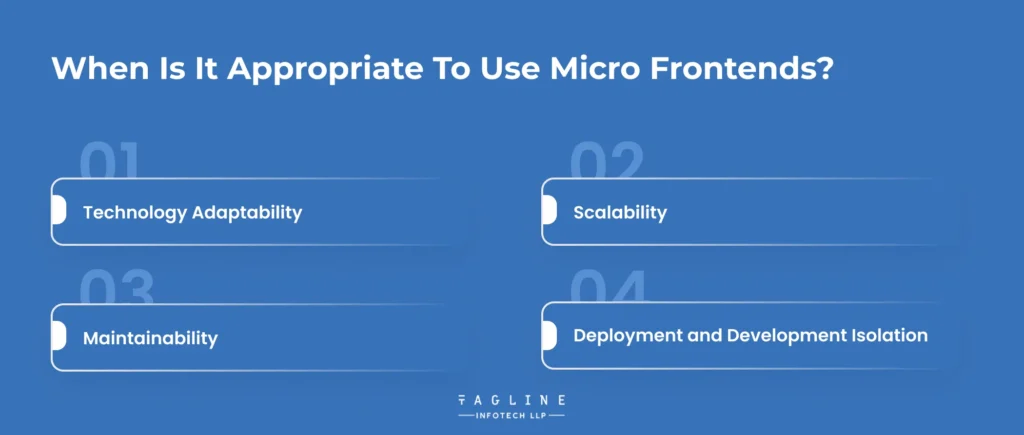Role of Python Libraries in Image Processing
October 30, 2025
Home >> AngularJS >> Angular Micro Frontends Architecture

Quick Summary
We live in a traditional society where technology is everywhere. These technological ecosystems evolve with time. Every day, a new technological advancement causes ripples across the industry. Business owners have opted to adopt microservices to adapt to technological change. However, the front end is still waiting for a gift, and the Micro Frontend just so happens to arrive. The benefits of using Angular Micro Frontends are the subject of this blog post. This article also covers the implementation of the Angular Micro Frontends Architecture. Ultimately, this post will help you understand why choosing Micro Frontend Angular is critical to your company’s success.
An architectural pattern called “Angular Micro Frontends” divides a single, extensive Angular web application into several smaller, deployable, self-contained micro-applications. Every micro-application is in charge of overseeing its own distinct set of features.
The objective is to create a single online application hosted on a single domain by merging web apps based on several technologies and domains. Since the deployment server and the technology stack will share a base URL, this will be completed even if they differ.
The Micro Front Frontend Architecture Angular aims to increase scalability, adaptability, and maintainability by streamlining the web application and promoting modularity. Reducing the web application’s complexity helps achieve this.
“Top 7 AngularJS Development Tools to Know in 2024 “
– Also Read Article

Technology Adaptability – With micro frontend design, teams can select and update a technology stack suitable for their specific area. This independence provides for faster development times and more accessible product improvements.
Scalability – A micro frontend architecture, which separates applications into smaller components based on the domains or business logic they operate on allows for scalability. Every group runs independently on several distinct platforms. When an application is scaled up to include several teams, adjustments to one frontend or adding a new element do not affect the work of other teams or the frontend. This facilitates the smooth scaling up of an application.
Maintainability – Under certain conditions, maintaining large-scale applications could be difficult. Micro frontend architecture solves this problem by segmenting the application into manageable chunks and giving each team the duty of preserving the assigned area. Should an individual microfeature or component experience issues, the remainder of the program will remain unaffected.
Deployment and Development Isolation – Every team works autonomously, allowing them to create, test, and implement their frontend component without depending on the work of other teams. This streamlined approach results in increased speed and efficiency.
Knowing what micro frontends are and when to use them is as essential as having a thorough grasp.
Expanding an application can be made much simpler by utilizing the idea of micro frontend architecture. When fewer are working on the program’s development, scaling it might not be an issue. On the other hand, large, distributed applications with a large team membership make a lot of sense for implementing the micro frontend architecture.
Furthermore, handling this task as a single team could prove very taxing if your goal is to develop many native user interfaces and apps that work with a broad spectrum of devices. This is where using a micro frontend approach shines. Although it also has uses in other business domains, electronic commerce is where this technology is most popular.
Looking to enhance your frontend architecture?
Hire skilled angularJS developers from us to create frontend applications that are faster, more scalable, and more user-friendly than ever before.
There are several approaches to implementing micro frontend architecture; the following are some of the more often mentioned ones:
The Angular Micro Frontend Architecture can be implemented with various libraries. Here are a few of the most well-known libraries:
This library requires some wrapping code or setup but does not require any changes to the current logic or code to support Microfrontend Architecture.
An explanation of how Microfrontend Architecture can be implemented to address each of the above-described problems is provided below:
Many business owners wonder if all applications must be created using the Micro Frontend Angular technique when creating their web apps. And thus! The answer to this question is absolutely “NO!” This method should only be used when building large, complex applications where there is interdependence between the modules and pages and multiple development teams find it challenging to work on the same project concurrently. The classic technique is the most sensible option for simple applications, consisting of a few modules or pages that are not very big.
We had this in our Pandora box about the Angular Micro Frontends. Our sincere goal is that after perusing this blog post, you’ve decided that Micro Frontend Angular is the best option for developing your next web application. On the other hand, if you are a business owner and unsure about whether or not it is the best option for your project given your demands and requirements, you might want to think about hiring an Angular Development Company to help you decide and walk you through the web application development process.
They can operate together as long as the other frontend frameworks can connect with the Micro Frontends via shared services, events, or application programming interfaces (APIs). For example, you can combine any other framework with Angular Micro Frontend, such as React or Vue.js, to create a hybrid application.
The Angular Micro Frontend architectural pattern is utilized for frontend development, while the microservices architecture pattern is employed for back-end development. An application is divided into several smaller, independently deployable services with application programming interfaces (APIs) to communicate between them when using microservices. On the other hand, the frontend application is divided into smaller modules with Angular Microfrontend, and each module is developed and deployed separately from the others. Through events, shared services, or application programming interfaces (APIs), these modules can interact with one another.

Digital Valley, 423, Apple Square, beside Lajamni Chowk, Mota Varachha, Surat, Gujarat 394101
D-401, titanium city center, 100 feet anand nagar road, Ahmedabad-380015
+91 9913 808 2851133 Sampley Ln Leander, Texas, 78641
52 Godalming Avenue, wallington, London - SM6 8NW